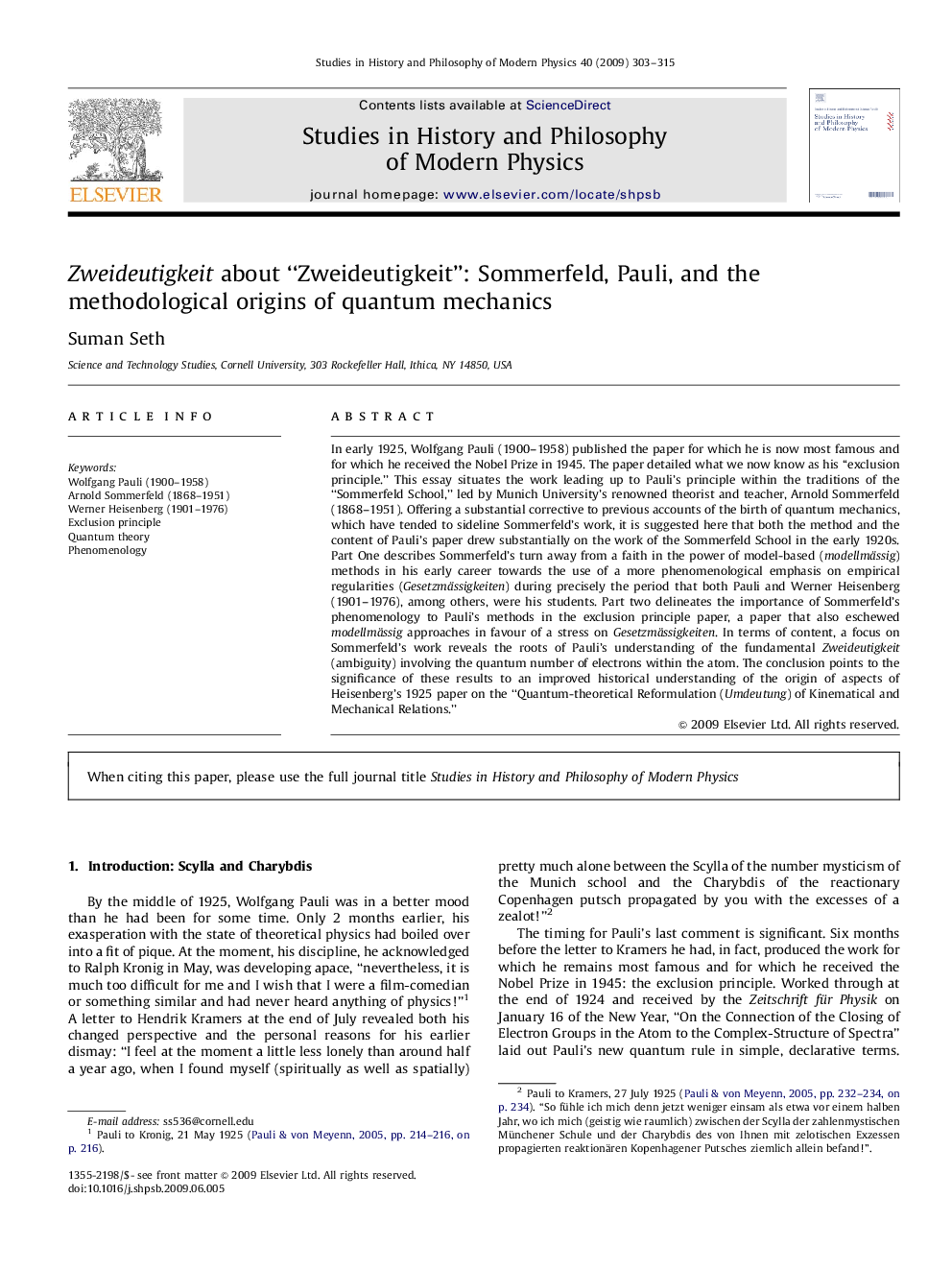| Article ID | Journal | Published Year | Pages | File Type |
|---|---|---|---|---|
| 1161706 | Studies in History and Philosophy of Science Part B: Studies in History and Philosophy of Modern Physics | 2009 | 13 Pages |
Abstract
In early 1925, Wolfgang Pauli (1900-1958) published the paper for which he is now most famous and for which he received the Nobel Prize in 1945. The paper detailed what we now know as his “exclusion principle.” This essay situates the work leading up to Pauli's principle within the traditions of the “Sommerfeld School,” led by Munich University's renowned theorist and teacher, Arnold Sommerfeld (1868-1951). Offering a substantial corrective to previous accounts of the birth of quantum mechanics, which have tended to sideline Sommerfeld's work, it is suggested here that both the method and the content of Pauli's paper drew substantially on the work of the Sommerfeld School in the early 1920s. Part One describes Sommerfeld's turn away from a faith in the power of model-based (modellmässig) methods in his early career towards the use of a more phenomenological emphasis on empirical regularities (Gesetzmässigkeiten) during precisely the period that both Pauli and Werner Heisenberg (1901-1976), among others, were his students. Part two delineates the importance of Sommerfeld's phenomenology to Pauli's methods in the exclusion principle paper, a paper that also eschewed modellmässig approaches in favour of a stress on Gesetzmässigkeiten. In terms of content, a focus on Sommerfeld's work reveals the roots of Pauli's understanding of the fundamental Zweideutigkeit (ambiguity) involving the quantum number of electrons within the atom. The conclusion points to the significance of these results to an improved historical understanding of the origin of aspects of Heisenberg's 1925 paper on the “Quantum-theoretical Reformulation (Umdeutung) of Kinematical and Mechanical Relations.”
Related Topics
Physical Sciences and Engineering
Physics and Astronomy
Physics and Astronomy (General)
Authors
Suman Seth,
